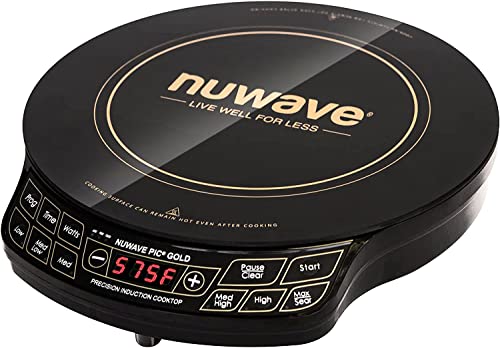A member here, Daizar, got that fridge. He has a thread on it somewhere in this forum.
While it appears to be one of the more efficient 120vac dorm fridges available, it still uses a bunch of battery power, about twice what a 12v compressor fridge would use. Yes the Kenmore is significantly cheaper than any 12v fridge available. I get it, and I'll refrain from my usual rant of how trying to be initially frugal costs more in the long run.
With this fridge I would be very interested in how much it actually draws in those first few seconds when the compressor kicks on (start up surge), and how much it consumes after it kicks on (running current), and how often it runs each hour( duty cycle).
If this 30 watts per hour average consumption is accurate, and I'm not really believing this, then it is pretty good, for that size of a fridge, but as Lucky Mike pointed out there are lots of variables that need to be accounted for, and that video addresses none of them, so I have no confidence in his claims, as his use of terminology regarding electrical consumption leads me to believe he understands very little about it, yet the video is comes off as a 'look how smart I am!, do what I did!' pat on the back. Behavior that we humans are all too prone to exhibit
Watt hours is a good measure of electrical consumption as it takes into account changing voltages compared to the more ubiquitous amp hours.
My 12v fridge is only 1.8 cubic feet, so not really comparable to that larger Kenmore, and it draws right around 30 watts when it is running, but it runs only about 20 minutes out of the hour or less, so it consumes about 10 watt hours average. I doubt that 30 watt U tube claim takes into account the ~15% losses of the inverter either.
CaseyC, I suspect your fridge's 12 power cord or the ciggy plug itself is damaged. It should not be blowing fuses. Danfoss wants their compressor fused at 15 amps and wiring no thinner than 12awg between it and the battery, and that is a relatively short length of no more than 8 feet total.
http://www.ra.danfoss.com/Technical...f_electronic_unit_ac-dc_04-2009_ei100g402.pdf
I know waeco provided the fridge with the ciggy plug cord for 12v operation, but this is doing a disservice to the instructions of the compressor maker. If a manufacturer of a product says you need 12 awg wire and a 15 amp fuse at no more than 8 feet and use minimal connections, then another manufacturer uses that product, inside their product, then provides 8 feet of undersized wiring and a connector with one of the worst reputations for voltage drop and unreliability for a power cord, one must Ask why.
Marketing. how many people would buy a portable fridge if it required that one have the skills to run power directly to the battery.
Also, with the 12 awg recommendation, and the Ciggy plug, most ciggy plug receptacles are underwired from the factory. They have too thin a wire over too many connections before the wiring even gets to the receptacle. So include this undersized wiring with the undersized wiring on the Fridge side of the equation and the fridge is barely receiving enough voltage to operate properly, and once the battery get a little low, well the Danfoss compressor will try and kick on, but then quit, and then the fan will just run for a few minutes.
On other forums with 12v fridges there are many threads started by those whose fridge does not last the whole night, and in most every case the solution is cutting off the ciggy plug and using a different connector and better thicker wiring directly to( and fused at) the battery.
Caseyc, I remember when you had the auxiliary battery and 12v plugs installed, and the massive sum they charged you to do it. I got the impression then they really had little idea what they were doing, and if the fridges 12v power cord is not damaged then the problem lies in the wiring that they did. Likely it is undersized.
Also your battery is Not going to be useful for much longer. If you are living on the edge of the low voltage alarm of the inverter, that poor battery is just gasping for a breath and your keeping it submerged. Expect failure pretty soon. Even if you were to adopt a proper charging regimen at this point the battery is severely capacity compromised.
You've indicated before you have a good income, but I think these places you have been getting service done have been taking advantage of you, and doing substandard work. I think you need to find a new place who will not take advantage of you to do the work you cannot do yourself, and do it correctly. I think they see you coming and as a walking dollar sign.
I really don't mean this to be as rude as it is going to sound, but if you have to go to a Ford dealer to have a fuse changed, you should not be giving electrical advice. The van's owner manual has to show how this is done. It is extremely and overwhelmingly basic.
I've repeated this many times on this forum, buy the Standard ubiquitous 12v power plug, the ciggy plug and receptacle, while convenient, is an extremely poor electrical connection that causes lots of issues. The more current it is asked to pass, the more likely it will fail.
Any 12v device with a ciggy plug which becomes inoperable, there is a 90% chance or greater the plug or receptacle itself has failed.
here is a higher quality standard 12v receptacle and plug, but I'd still not recommend them for anything more than about 100 watts:
http://www.amazon.com/Brand-Blue-Sy...keywords=Blue+Sea+Systems+12v+socket+and+plug











































































